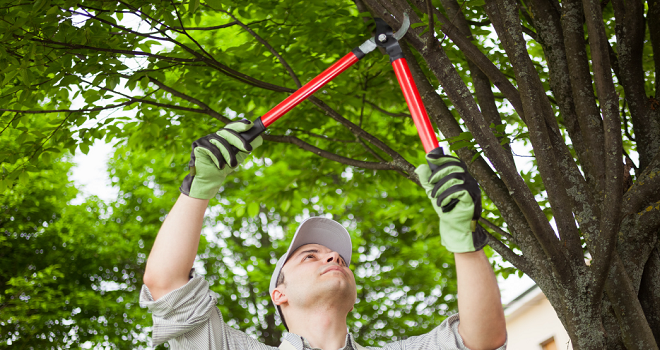2024 Guide Making Sure Your Home and Lawn are Prepared for Winter
Winter is coming, and with it, the need for protection against the chill. Understanding how to prepare your lawn and home for winter in 2024 is critical to protect your property from the harsh weather.
Preparing your yard for winter is essential to help your lawn thrive in the spring. Fixing issues on the exterior of your home will help keep you comfortable and save you money on energy bills during winter.
KEY TAKEAWAYS
- Getting your yard and home ready for winter will help you manage your home smoothly all the way through spring.
- Avoid problems around your home during and after winter by following our expert tips.
- Keeping your home in top shape for winter will save energy and help keep you and your family comfortable all season long.
Here's a step-by-step guide to help you get your yard and home ready for winter:
Clean Up the Yard
Remove leaves, branches, and debris from the lawn and garden beds. This helps prevent mold and disease and allows for better air circulation.
Prepare Your Lawn
Follow these steps to get your lawn ready for the winter and to promote a healthy lawn in the spring.
- Dethatch the lawn if needed. You can skip this step if you have a thick lawn of St. Augustine grass (also called carpet grass). For other grasses such as Bermuda, you’ll need to dethatch the lawn if you find a thick layer of grass clippings and leaves at the base of your lawn. If you have a small lawn, you can use a regular leaf rake or dethatching rake. For larger lawns, use an electric dethatcher or a lawn tractor dethatcher attachment. Rake or vacuum your lawn to remove thatch debris. Removing thatch will allow water and fertilizer to better reach the grass roots. Dethatching will also help winter rye grass thrive if you overseed your lawn.
- Aerate. You may not have to aerate your lawn every year, but you should aerate every time you dethatch your lawn. Aeration perforates holes into the soil surface to loosen dirt and allow water and fertilizer to reach grass roots. You can rent an aerator or use a lawn tractor aerator attachment to treat your lawn. For lawns with St. Augustine grass, you should aerate every few years to loosen up soil and help water and fertilizer reach the roots of your thick lawn.
- Top-Dress Your Lawn. Every few years, it essential to top dress your lawn with enriched top soil. Spread top soil over the grass and then work the soil in using a garden rake or leaf rake. You should top-dress your lawn every time you aerate and dethatch.
- Fertilize. Spread a winter fertilizer formula over your lawn to you’re your lawns survive the winter stress, encourages a stronger, deeper root system and create a thick, green lawn in spring. Fertilizing will also help winter rye grass thrive if you overseed in this fall.
- Overseed. When you live in southern regions and you want your lawn to have that “model home” look that builders achieve, overseed your lawn with winter rye grass. Your neighbors will be impressed with your gardening expertise when your lawn is the only green one in the neighborhood during winter. After following all of the above steps, overseeding will produce a lush, green lawn all winter long. To get the rye grass seeds to sprout, you’ll need to keep your lawn wet for 3 consecutive days after planting. To conserve water, plant the seeds immediately before you see eminent rain in the weather forecast. Ideally, you’ll need to use a drop spreader to cover your lawn effectively with rye grass seed. You can use a broadcast spreader but coverage may not be as consistent. Note: You shouldn’t overseed a thick St. Augustine grass lawn because many rye grass seeds won’t reach the soil and sprout.

Trim and Prune Trees and Shrubs
Prune dead or damaged branches from trees and shrubs to prevent them from falling during heavy snow or ice.
Trim back perennials and bushes to tidy them up and encourage healthy spring growth.
Prepare Your Flower Beds
Remove annual plants that won't survive the winter.
Mulch perennial plants in your flower beds to protect the roots from freezing temperatures. A layer of 2-4 inches of mulch is usually sufficient.
Consider covering sensitive plants with burlap or frost blankets during freezes.
Care for Outdoor Potted Plants
Bring sensitive potted plants indoors or into a protected area.
Elevate pots off the ground to prevent them from freezing to the surface.
Prepare Outdoor Plumbing
Drain water from hoses and store them indoors to prevent freezing and cracking.
Drain and winterize your irrigation system to prevent freezing and damage.

Inspect and Clean Gutters
Clean gutters and downspouts to prevent ice dams and water damage to your home.
Check Your Home's Exterior
Inspect the exterior of your home for any gaps or openings that may need sealing to prevent drafts and damage during winter.
Siding
Damaged siding can cause drafts. Also, exposed insulation behind damaged siding won’t insulate your home properly.
Look for these problems while examining your home’s siding:
- Cracks or holes. Check for any visible cracks or holes in the siding material.
- Warped or buckled siding. Look for sections that appear to be warped, bowed, or buckled.
- Loose siding. Check if any siding panels are loose or coming away from the wall.
- Gaps or separations in joints and seams. Pay close attention to the joints and seams between siding panels. Ensure they are properly aligned and that there are no gaps or separations.
- Rot or decay. Carefully check for rot or decay in siding, fascia and soffits.
After completing the siding inspection, prioritize the repairs needed. Minor issues like small cracks or loose panels may be manageable as DIY projects, while more significant problems should be addressed by professionals.
When you get to the point where you need to replace your home’s siding, schedule a free in-home consultation with a Sears expert and we’ll help you get the project started.
Windows
Look for visible damage to weather stripping and seals around the windows. When you find gaps, use appropriate materials to seal the damaged spots. Depending on the size and location of the leaks, you may need to use caulk, weather stripping, or foam sealant.
If you find lots of air leaks, it may be time to replace your windows with new, energy-efficient ones. Schedule a free in-home consultation with a Sears window expert to get your project started.
Roof
A damaged roof can cause drafts in your home, and water leaking through a bad roof can damage insulation and the interior home structure.
Follow these steps to check your roof for damage:
- Use binoculars to get a close look at the roof. Check for shingles that are curled, cracked, distorted, buckled or missing.
- Check gutters and the ground below downspouts for gritty granules worn from the surface of shingles. Shingles that have lost their protective granular coating deteriorate quickly.
- Look inside your attic and check for daylight coming through the roof.
If you see any of the above, schedule a free in-home consultation with a Sears roofing expert to begin the process of replacing your roof.
By following these steps, you'll help protect your yard and home during the winter months. Preparing your lawn for winter will ensure that it's ready to flourish when spring arrives. Keeping your home in top shape for winter will save energy and help keep you and your family comfortable all season long.
Was this content helpful?
Siding Resources
Upgrade your home's exterior with sustainable siding materials from Sears Home Services.
Discover the top 4 types of siding and learn how to choose the right one for your home. Get expert tips from Sears Home Services.
Homeowners trust vinyl siding in chilly climates, in particular, because they know vinyl endures the impacts of harsh winter weather.
Discover the top 5 questions to ask before replacing home siding in 2024. Get expert advice and make an informed decision with Sears Home Services.
